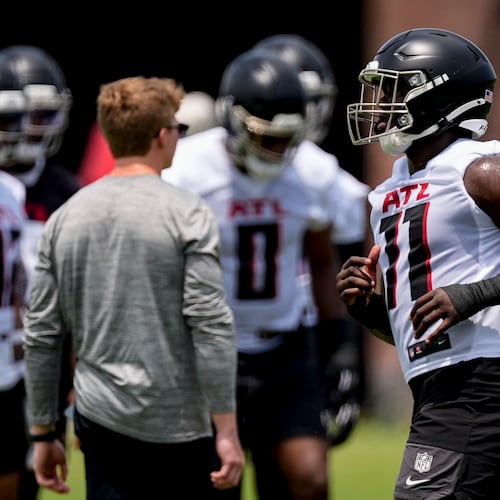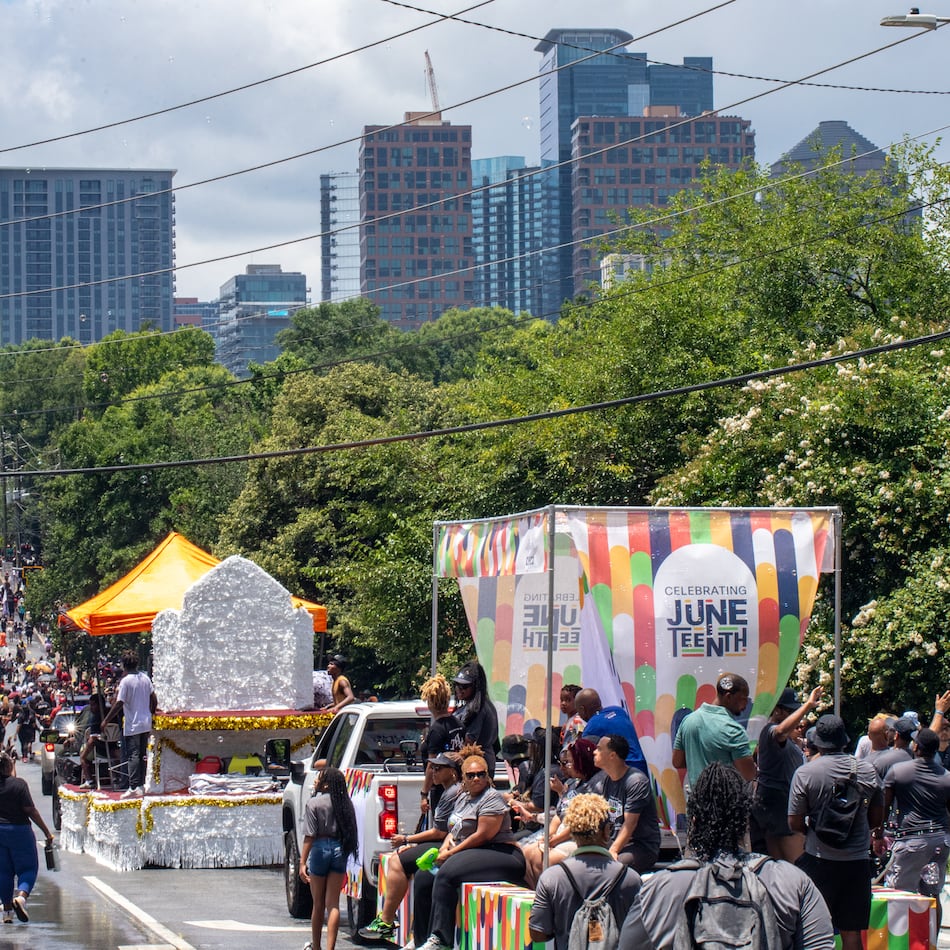Notre Dame is an acquired taste.
It is not for the cynic. It does not now, nor will it ever, appeal to those who speak college football in a regional dialect and give hosannas to the likes of Bear Bryant and Frank Howard and General Neyland. Never will it sway those who really believe that Rudy was offsides.
After an eight-year lapse, Georgia Tech — no slouch itself in the history department — pays a visit Saturday to the combination top-10 team/pilgrimage site that is Notre Dame.
Be assured that the network with exclusive rights to Fighting Irish football will show a 40-year-old clip of Rudy Ruettiger sacking Tech quarterback Rudy Allen early in the telecast. “You’ll see that mid-first quarter,” promised NBC’s coordinating producer Rob Hyland.
Yes, this is the place that brought you the movie “Rudy.” The same place that brought you Ronald Reagan as the deathly ill George Gipp in the 1940 movie “Knute Rockne, All American.” The Irish love those flicks. As for everyone else, “Warning: Viewing may lead to diabetic coma.”
“Embarrassingly enough, I watched (Rudy) just two or three weeks ago,” linebacker Joe Schmidt confessed.
“Hey, it’s one of the greatest soundtracks of all time.”
At Notre Dame, they do not officially employ the term redshirt like everyone else. While Saturday’s quarterback, DeShone Kizer, is a redshirt freshman by all known eligibility rules, Notre Dame lists him as a sophomore. Redshirt seniors are referred to as grad students.
At Notre Dame, the building that houses the football team — the Guglielmino Complex, with its steepled roof and huge ornamental window over the entrance — appears to all the world like a church from the outside. On the inside are sacred treasures. The seven Heisman trophies, all in a row, in order from Angelo Bertelli (1943) to Tim Brown (’87). A statue of the Four Horsemen. The walls papered with photos of glory days, the preponderance predating color. And Rockne everywhere, as it must be with Henry Ford in Detroit.
“Just walking around the Goog, you’re forced to take part in (the history),” said Isaac Rochell, a junior defensive lineman from McDonough. “Everything is so old, but it’s like a good old.”
Notre Dame always posts near perfect graduation success rates — in 2014, 99 percent for the entire athletic department, 94 percent for football. It even suspended a starting quarterback for cheating on a test. Everett Golson since got his degree and transferred to Florida State.
Earlier this month, Notre Dame president John Jenkins told the New York Times that if college football continued down the path of professionalization, he wouldn’t be opposed to the Irish dropping out of the college football mainstream altogether. Imagine morning milk geysering from nostrils everywhere when folks read that one. Notre Dame not playing top-shelf football. The Notre Dame. Yeah, right.
The inter-marriage of the history, the pride, the high-minded idealism is difficult to digest for those who don’t get Notre Dame.
And the very strong impression that the Irish do it more right than most leads to a high volume of eye-rolling resentment.
And yet: “They don’t just pay lip service to the student-athlete,” said Murray Sperber, author of “Shake Down the Thunder: The Creation of Notre Dame Football,” and professor at Cal-Berkeley. He is not a Notre Dame man, and is, in fact, a frequent critic of the hypocrisies that abound in college sport.
“I don’t think they understand how profoundly that model has changed,” Sperber said. “Other schools do, and the SEC is leading the charge. I think Notre Dame is very baffled by that. They truly, deeply believe in the student-athlete model.
“Now people who don’t like Notre Dame say it’s all B.S.”
There’s the great divide, one almost as old as college football itself.
The mystique of Notre Dame is a divisive thing. And it is quite proper now to ask, here in advance of Tech’s visit, just how alive that aura is today. How strong can it be? The Yellow Jackets, after all, are a 2.5-point favorite.
A case study: Rochell graduated from high school 25 years after Notre Dame won its most recent national championship in 1988. Playing his football in Georgia, he felt no particular connection to the place or the history.
His mother had to practically drag him to take a visit, he said, and, “I came up here and fell in love with it. It’s kind of a simple story, but that’s what happened.”
“It’s either going to hit you or it’s not,” Rochell said, explaining the relationship between the modern player and the dusty Notre Dame mystique.
“Some people come up there and say, ‘It’s really pretty, but I don’t get all the hype.’ And some people hardly see anything before they say, ‘I just love it here.’ I think (the Notre Dame ideal) still holds the same truth.”
This is the age of the conference network, the age of the playoff, the age of the ascendancy of the SEC. Notre Dame, said Sperber, “was the New York Yankees of college football.” But that was so early 20th century. The Yankees aren’t the Yankees any more, and neither is Notre Dame.
Where does all that leave the specialness that was a Notre Dame trademark?
The coach, naturally, will vigorously pump life into anything that makes his program stand apart. “(The mystique) still resonates from the tradition of football here, woven in the fabric of the university,” Brian Kelly said. “It’s still very much in the forethought of the player who comes here.”
The broadcaster will go in search of it, for that which separates Notre Dame from the other football powers has become more difficult to focus upon. This summer NBC producer Hyland had all his crew stroll the campus, from the foot of Touchdown Jesus — the mural that adorns the library — to the golden-domed main building to the grotto where the prayer candles flicker.
“It is the only way to really gain an appreciation for how this place works,” Hyland said.
When he began doing play-by-play on the Irish broadcast two years ago, Dan Hicks wasn’t sure he’d ever be immersed in the Notre Dame myth and mystique. Then he began exploring the campus, one that is unlike any other attached to a massive football program (for one thing, it serves only 8,000 undergrad students). And meeting the fans who regard Notre Dame Stadium as being just a Michelangelo short of the Vatican. And, he admitted, he was hooked.
In a manner, Notre Dame is the Augusta National of college football.
It is a destination. It is bound to be forever wrapped in the gossamer of its own carefully crafted image. And, sure, it can get a little syrupy around here, too.
And like Augusta National, some people acquire an affection for the place on a gut level. While others never can.
About the Author
Keep Reading
The Latest
Featured



